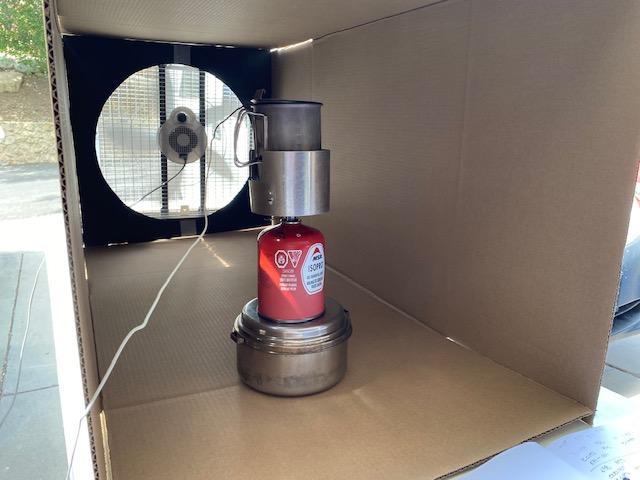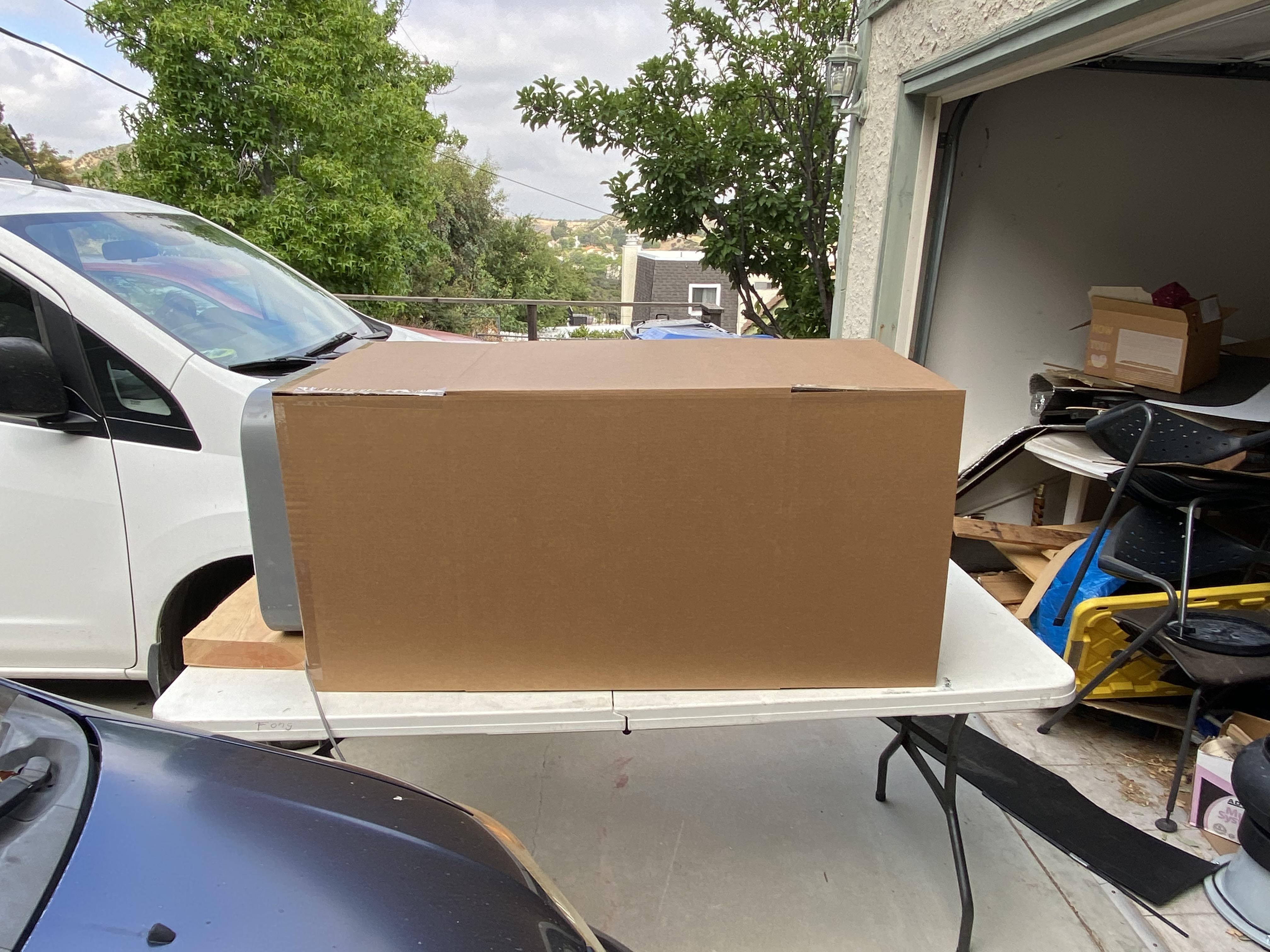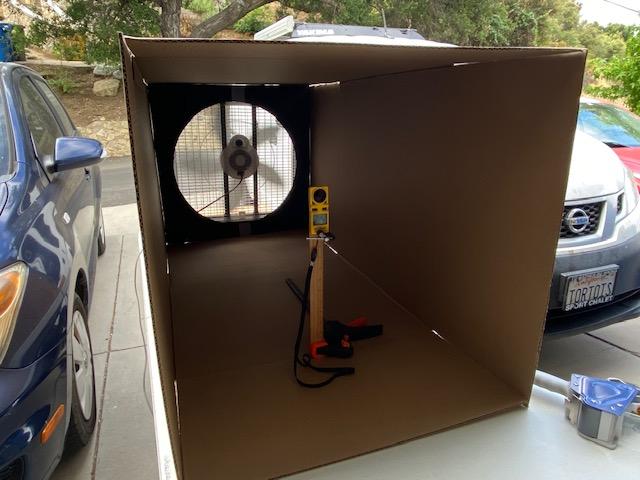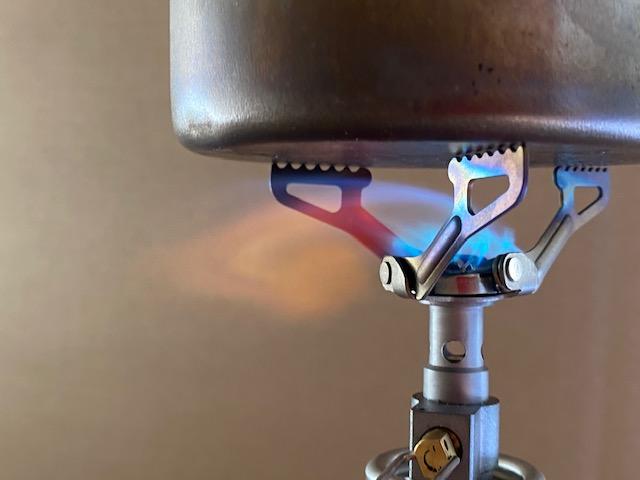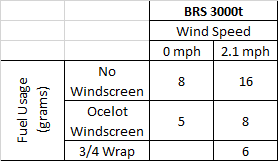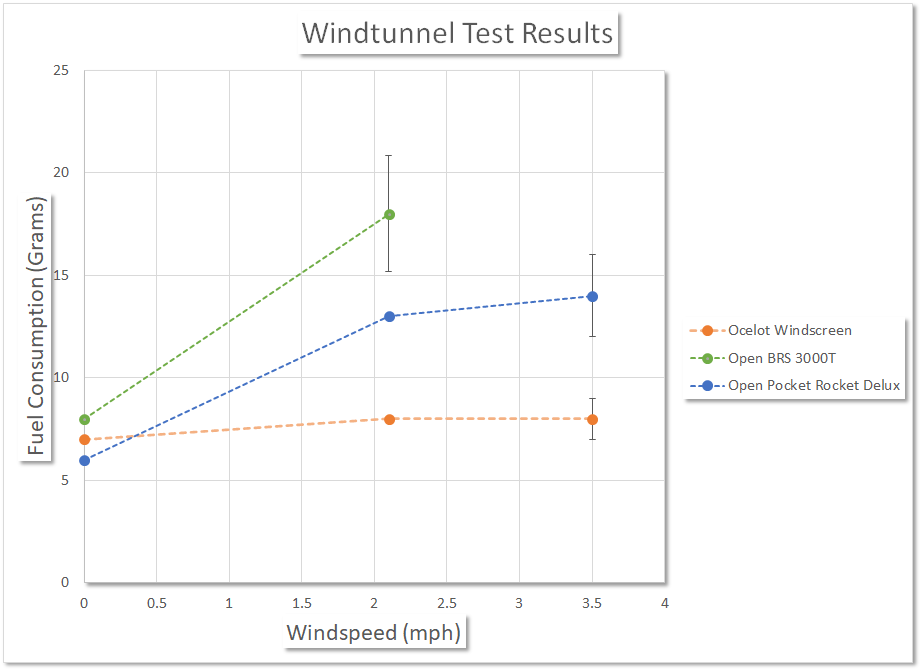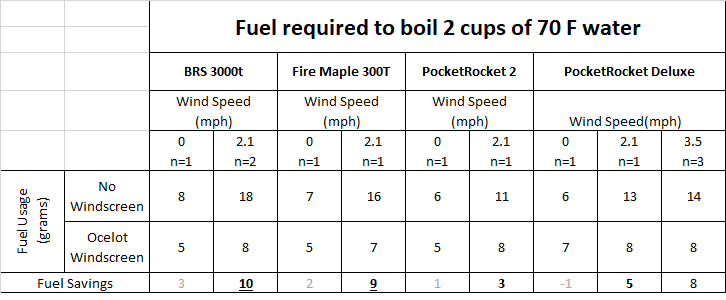Topic
Ocelot Windscreen efficiency
Forum Posting
A Membership is required to post in the forums. Login or become a member to post in the member forums!
Home › Forums › Gear Forums › Gear (General) › Ocelot Windscreen efficiency
- This topic has 4 replies, 2 voices, and was last updated 4 years, 7 months ago by
 Jon Fong / Flat Cat Gear.
Jon Fong / Flat Cat Gear.
-
AuthorPosts
-
Jun 17, 2020 at 12:17 pm #3653521
<p style=”text-align: center;”>Ocelot Windscreen</p>
<p style=”text-align: left;”>
The primary objective is to reduce fuel consumption in the wind. A wind tunnel was created and the initial configuration yielded a steady 2.1 mph airflow. In all test cases, 2 cups of 70 F water was used. Time to boil and fuel consumption was measured. Since it is not possible to repeatably set the fuel flowrate, the flowrate was approximated. I made an attempt not to turn the flowrate high as the objective was fuel efficiency. Given that this was a shake down run, only a single test was run at each condition.</p>



<p style=”text-align: left;”>
The BRS 3000t was selected as the starting point due to the reputation of not being very robust in the wind. I used a Snow Peak Trek 700 as my mug. Note that in one test condition (open & 2.1 mph) the test was halted prior to reaching a boil. The water reached 140 F (the halfway point between 70 F & 210 F and the test had taken 8:30 minutes. Fuel consumption was 10 grams so I doubled the weight assuming linearity of heat transfer. In all probability, this is a conservative guess as the heat transfer rates away from the mug will only increase with higher temperature.</p>

<p style=”text-align: center;”>BRS 3000t flame shape at 2.1 mph wind</p>
<p style=”text-align: center;”>
Test results</p>

<p style=”text-align: center;”>Conclusion</p>- The test setup seems valid, I may need to consider lowering the airflow in order to obtain cleaner data
- A larger sample size is needed
- At first glance, the BRS 3000t is terrible in the wind. I won’t know more until I compare it with other cannister topped stoves
- There appears to be some efficiency gains in the no wind condition. This could be attributed to keeping the hot gasses in proximity to the mug. This was not an objective to the design, but it is a slight benefit
- There is a lot more work that could be done
My 2 cents
Jun 17, 2020 at 5:16 pm #3653607Hi Jon
Very good photo of BRS-3000 in wind. The effect was certainly known long ago and applies to most small uprights, but the photo is a valuable proof. Thank you.
I find that the actual stove used under those conditions does not really matter very much: the wind blows the flame away. But maybe you could test a few others?
Can I also suggest you repeat the test with a GOOD windscreen – half-way up the side of the pot and at least a 3/4 wrap. No air holes. In general I find that solves the problem very well.
Cheers
Jun 17, 2020 at 6:16 pm #3653627Roger,
I agree 100%. A full hewight, 3/4 windscren is optimal (keep in mind that my scale only has a 1 gram resolution). I already have customers stating that the 3.58″ height is almost too tall for their mug!
Here is your data, I havve data on other stove that I will publish soon.
 Jun 17, 2020 at 6:42 pm #3653638
Jun 17, 2020 at 6:42 pm #36536383.58″ is too tall for their mug? That cannot be with the windscreen sitting on the ground, surely? 3.5″ barely gets up to the valve on most uprights.
Cheers
Jun 18, 2020 at 3:01 pm #3653782More Ocelot Windscreen test results
This is comparing the “Best” and the “Worst” Stove with and without the Ocelot Windscreen

Here is the raw data, there was some replication at the edges of perfromance

@ 3.5 mph wind, 2 empty soda cans staked on top of each other will remain balanced. Assuming that you use your stove on the ground, the 2.1 & 3.5 mph winds are pretty strong. Theoretically, the speed of the air at ground level is zero and rises rapidly with elevation ( never use your stove in the wind on a bench or table!).
Here is a quick video of teh testing
-
AuthorPosts
- You must be logged in to reply to this topic.
Forum Posting
A Membership is required to post in the forums. Login or become a member to post in the member forums!
Our Community Posts are Moderated
Backpacking Light community posts are moderated and here to foster helpful and positive discussions about lightweight backpacking. Please be mindful of our values and boundaries and review our Community Guidelines prior to posting.
Get the Newsletter
Gear Research & Discovery Tools
- Browse our curated Gear Shop
- See the latest Gear Deals and Sales
- Our Recommendations
- Search for Gear on Sale with the Gear Finder
- Used Gear Swap
- Member Gear Reviews and BPL Gear Review Articles
- Browse by Gear Type or Brand.

